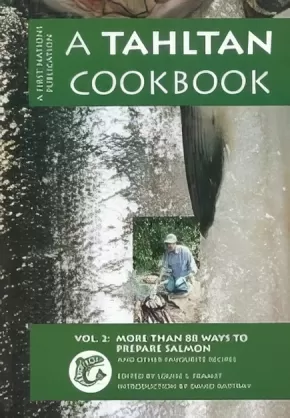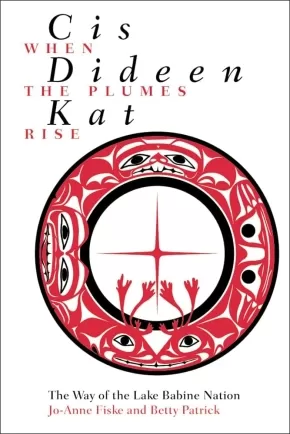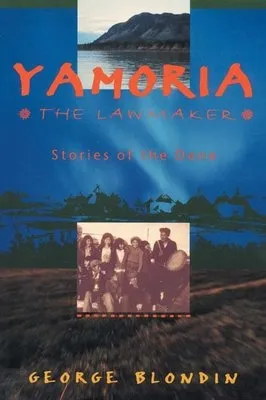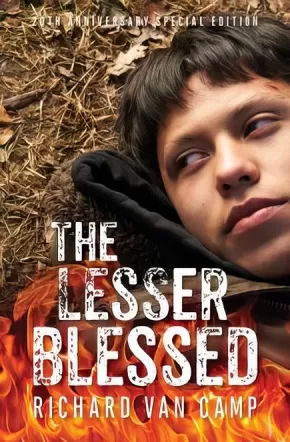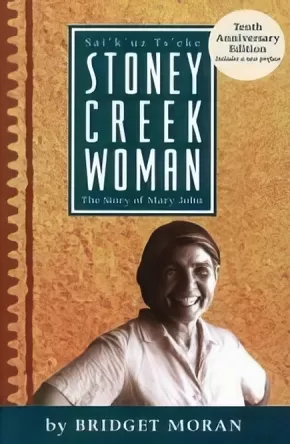Dene
Synopsis:
People of the Tahltan First Nations of northern BC have had generations of practice in preparing salmon. Tahltans have lived along the Stikine River, a salmon-bearing river, forever. A Tahltan Cookbook Vol. 2: More Than 88 Ways to Prepare Salmon and other favourite recipes includes authentic, traditional salmon dishes as well as modern, adapted ones. We invite you to share in our celebration of salmon.
This book is more than just a cookbook. Included in this book are profiles of contributors, stories, and photos.
Educator Information
B.C. Science Supplementary Resource Gr.4- Life Science
This volume contains over 88 salmon recipes while sharing Indigenous culture in relation to the history of salmon and its importance to First Nations people.
Additional Information
112 pages | 6.00" x 8.75"
Synopsis:
The heart of the traditional legal order of the Lake Babine Nation of north-central British Columbia is the grand ceremonial feast known as the balhats, or potlatch. Misunderstood and widely condemned as a wasteful display of pride, the balhats ceremonies were outlawed by the Canadian government in the late nineteenth century. Throughout the years that followed, the Lake Babine Nation struggled to adapt their laws to a changing society while maintaining their cultural identity.
Although the widespread feasting and exchange practices of the balhats have attracted continuous academic and political interest since the nineteenth century, little consideration has been given to understanding the legal practices embedded within the ceremonies. Cis dideen kat, the only book ever written about the Lake Babine Nation, describes the customary legal practices that constitute "the way."
Authors Jo-Anne Fiske and Betty Patrick use historical and contemporary data to create a background against which the changing relations between the Lake Babine Nation and the Canadian state are displayed and defined, leading to the current era of treaty negotiations and Aboriginal self-government.
Through interviews with community chiefs and elders, oral histories, focus groups, and archival research, Fiske and Patrick have documented and defined a traditional legal system still very much misunderstood. Their findings include material not previously published, making this book essential reading for those involved in treaty negotiations as well as for those with an interest in Aboriginal and state relations generally.
Cis dideen kat was shortlisted for the 2001-2002 Harold Adams Innis Prize.
Synopsis:
William Beynon was born in 1888 in Victoria to a Welsh father and a Tsimshian mother. He was an accomplished ethnographer and had a long career documenting the traditions of the Tsimshian, Nisga'a, and Gitksan. In 1945 he attended and actively participated in five days of potlatches and totem pole raisings at Gitksan village of Gitsegukla. There he compiled four notebooks containing detailed and often verbatim information about the events he witnessed. For over 50 years these notebooks have seen limited circulation among specialists, who have long recognized them as the most perceptive and complete account of potlatching ever recorded.
In Potlatch at Gitsegukla the almost 200 pages of the notebooks are published for the first time. Sketches and a selection of photographs taken by Beynon are also included (augmented by photographs taken by Wilson Duff in 1952). In addition to meticulously transcribing and annotating the text of the notebooks, Margaret Anderson and Marjorie Halpin provide a comprehensive introduction that puts Beynon's account into a Gitskan cultural perspective, as well as extensive appendices listing names, places, and Gitskan terms in the notebooks. There is also an excellent timeline of key events in Gitskan history by James McDonald and Jennifer Joseph.
William Beynon's notebooks are among the most significant written records of Northwest coast potlatching and are an unsurpassed resource documenting these activities among the Gitskan. This rare, first-hand, ethnographic account of a potlatch reveals the wonderful complexities of the events that took place in Gitsegukla in 1945.
Additional Information
296 pages | 6.00" x 9.00" | Paperback
Synopsis:
In-depth analysis of the 130-year history of the Aboriginal title issue in British Columbia, including the Gitksan and Wet'suwet'en case.
Anthropologists have traditionally studied Europe’s “others” and the marginalized and excluded within Europe’s and North America’s boundaries. This book turns the anthropologist’s spyglass in the opposite direction: on the law, the institution that quintessentially embodies and reproduces Western power.
The Pleasure of the Crown offers a comprehensive look at how Canadian, particularly British Columbian, society “reveals itself” through its courtroom performances in Aboriginal title litigation. Rather than asking what cultural beliefs and practices First Nations draw on to support their appeals for legal recognition of Aboriginal title, Culhane asks what assumptions, beliefs, and cultural values the Crown relies on to assert and defend their claims to hold legitimate sovereignty and jurisdiction over lands and resources in B.C. What empirical evidence does the Crown present to bolster its arguments? What can thus be learned by anthropologists and the public at large about the historical and contemporary culture of the powerful?
Focusing in particular on the Gitksan and Wet’suwet’en case, the book traces the trial of Delgamuukw. v. Regina from its first hearing during 1987 and 1991 to its successful appeal to the Supreme Court of Canada, which issued a landmark ruling on the case on December 11, 1997.
Additional Information
416 pages | 6.00" x 9.00" | Paperback
Synopsis:
Dene Elder George Blondin creates a spiritual guidebook that weaves together oral stories with the recounting of how the northern Canadian Dene came to depend on the European fur traders. The result is a magical journey for readers of any heritage.
Additional Information
240 pages | 6.00" x 9.00" | Paperback
Synopsis:
A powerful coming-of-age story -- edgy, stark, and at times, darkly funny that centers around Larry, a Native teenager trying to cope with a painful past and find his place in a confusing and stressful modern world.
Larry is a Dogrib Indian growing up in the small northern town of Fort Simmer. His tongue, his hallucinations and his fantasies are hotter than the centre of the sun. At sixteen, he loves Iron Maiden, the North and Juliet Hope, the high school tramp.
In this powerful and very funny first novel, Richard Van Camp gives us one of the most original teenage characters in Canadian fiction. Skinny as spaghetti, nervy and self-deprecating, Larry is an appealing mixture of bravado and vulnerability. His past holds many terrors: an abusive father, blackouts from sniffing gasoline, an accident that killed several of his cousins, and he's now being hunted and haunted by a pack of blue monkeys. But through his new friendship with Johnny, a Métis who just moved to town, he's now ready to face his memories and his future.
The Lesser Blessed is an eye-opening depiction of what it is to be a young Dogrib man in the age of AIDS, disillusionment with Catholicism and a growing world consciousness.
Educator Information
Grades 11-12 BC English First Peoples resource for the unit What Creates Family?
Note: This novel contains mature content, such as depictions of violence and incidents of drug and alcohol use).
Additional Information
128 pages | 5.50" x 8.50"
Synopsis:
The captivating story of Mary John (who passed away in 2004), a pioneering Carrier Native whose life on the Stoney Creek reserve in central BC is a capsule history of First Nations life from a unique woman's perspective.
A mother of twelve, Mary endured much tragedy and heartbreak the pangs of racism, poverty, and the deaths of six children but lived her life with extraordinary grace and courage. Years after her death, she continues to be a positive role model for Aboriginals across Canada. In 1997 she received the Order of Canada. This edition of Stoney Creek Woman, one of Arsenal's all-time bestsellers, includes a new preface by author Bridget Moran, and new photographs.
Shortlisted for the Roderick Haig-Brown Regional Prize
Now in its 14th printing.

